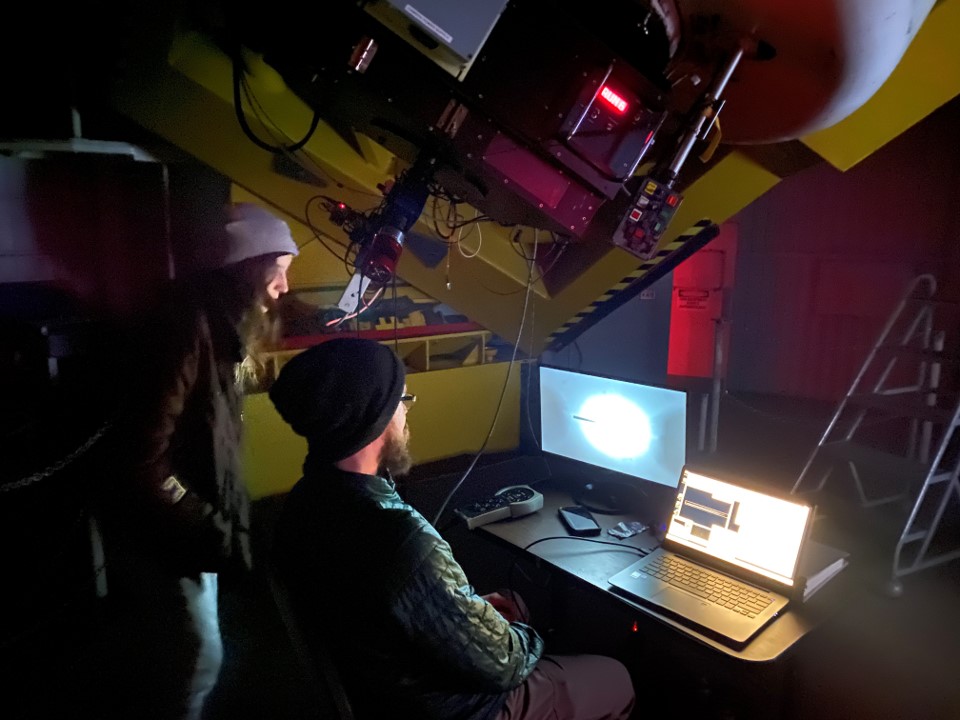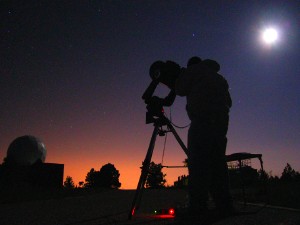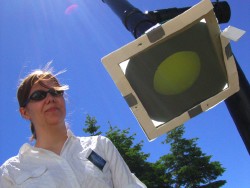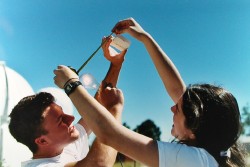Telescopes and Facilities
Large Telescopes
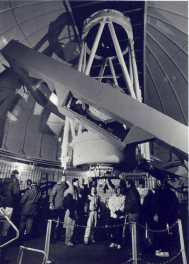 Perhaps the most unique aspect of Astronomy Camp is the availability of large research telescopes under dark Arizona skies.
You can learn more about each of the telescopes we use by selecting one of the following links.
Perhaps the most unique aspect of Astronomy Camp is the availability of large research telescopes under dark Arizona skies.
You can learn more about each of the telescopes we use by selecting one of the following links.
At the Mt. Lemmon and Bigelow sites (9,157 and 8,235 feet elevation):
- Two Celestron 8-NextStar Evolution telescopes with CMOS cameras and wide-field optics.
- A 12-inch (0.3 meter) Meade LX-200 reflector.
- The 24- and 32-inch telescopes of the SkyCenter.
- A 60-inch and the 61-inch Kuiper telescope.
- A 60-inch telescope of the University of Minnesota, enabling digital imaging at infrared wavelengths with a 2MASS IR camera.
- The 90-inch Bok telescope
- The 12 meter radio telescope of the Arizona Radio Observatory
- The 10-meter Heinrich Hertz Submillimeter Radio Telescope (SMT)
Direct Imaging
Astronomy Camp also has a large array of imaging instruments that can be installed on the telescopes above. This gives Campers
unmatched capabilities and flexibility!
The following equipment is used for astrophotography:
- An Santa Barbara Instrument Group CMOS camera (Aluma AC404 ) (4096x4096 pixels) on the 24- and 32-inch telescopes.
- Two ZWO CMOS cameras for general use with imaging and spectroscopy: ASI6200mm Pro (43.3 mm diagonal; 3.8 micron pixels) and ASI533MC Pro (16 mm diagonal; 9 micron pixels).
- Numerous 1.25" and 2" Televue eyepieces (including a 55mm Ploessl, 41mm & 35mm Panoptic), filters (nebular, solar, lunar) for all telescopes.
- Hand-held cameras for exploring the environment in both the ultraviolet (UV) and infrared (IR).
- Photon-counting OPTEC SSP-3 photometer, for all telescopes
- Prime focus HyperStar optics with the above ZWO CMOS cameras and filters (LRGB, H,O,S narrow-band) on either a Celestron 8-NextStar Evolution or Celestron 11-inch telescope. A SXVR-H694 camera is also available.
- A ZWO ASIAIR Pro WiFi controller can remotely control the above cameras and 8-inch telescope for long-exposure imaging with active image stacking.
- Digital SLR Canon cameras such as an optimized Canon 80D for astrophotography adaptable for all our telescopes or with separate tracking mounts like Star Adventurer.
- Celestron smartphone NexYZ-3axis mounts
- Star Adventurer polar-mounted tracker
- Byers polar-tracking system, Cam Trak
- Infrared imaging with a 2MASS IR camera on the 60-inch telescope of the University of Minnesota.
- A world-class 4096x4096 pixel CCD for imaging at the 61" Kuiper telescope
- A state of the art 4096x4096 pixel thinned-CCD prime focus camera at the 60" telescope that covers a one-degree field of view (4 full moons).
- PISCES: A 1024x1024 pixel wide-field near-infrared (1.0-2.5 microns) camera, still used for active research, can be used at the 61" and 90" telescopes for Advanced Camps.
Solar Observing
Astronomy Camp also features an afternoon of solar imaging with a wide variety of gadgets for safely viewing the Sun's photosphere, chromosphere, sunspots, prominences, and flares.
- A Day Star hydrogen-alpha filter for observing prominences, flares, granulation, and general activity on the Sun. Its bandwidth is 0.6 Angstroms. It can be used on the 12-inch LX-200 telescope or separately on an 8-inch Celestron telescope.
- A Coronado Instruments Calcium-K filter for observing solar magnetic activity.
- A homemade Sun Gun for directly imaging the Sun in broad-band visible light.
- A classic Questar 3.5-inch telescope for solar imaging.
- Two models of SunSpotter telescopes.
- BinoMite binoculars from Coronado.
- Two Astroscan telescopes for viewing the photosphere by eyepiece projection.
- Spectroscopes for examining spectral lines (absorption and emission) in laboratory light sources and the Fraunhofer absorption lines in the Sun's spectrum.
- Pinhole cameras using the dark interiors of our telescope domes.
- Eclipse glasses for direct viewing of sunspots.
Spectroscopy
The "other" half of observational astronomy is spectroscopy.
Using the Camp spectrometers, campers can dissect the light coming from astronomical objects to determine their physical
and chemical properties! Follow this link for lots more information about
spectroscopy at Astronomy Camp!
- An Optomechanics Research grating spectrometer, for all telescopes. It can be used for visual spectroscopy (by eye), for photographic spectroscopy (with a 35mm camera), or electronic spectroscopy (with the above ZWO cameras).
- An SBIG Model SGS spectrograph and the Starlight Express SXVR-H694 camera.
- Diffraction gratings ("grisms") that thread into 1.25" eyepieces, for both visual use on and electronic imaging on all our telescopes (4-61").
Computers
Modern astronomy has come to rely heavily on computers; both for control of telescopes and instruments, and for image processing and scientific analysis (and for scientific collaboration!). Follow this link to learn more about computing capabilities at Astronomy Camp!
3-D Printing
Campers have access to an
Ultimaker 3-D printer and associated software to develop .STL files of planetary landscapes, NASA models, etc. Campers can develop their
own projects and also manufacture components needed in various engineering efforts during Camp.
Tucson Area Sights
Astronomy Camp provides a rare opportunity for a true behind-the-scenes look at some of the major astronomical facilities in Tucson, such as:
- Steward Observatory's Richard F. Caris Mirror Laboratory, casting the world's largest mirrors.
- Kitt Peak National Observatory
- Mount Graham International Observatory
- The MMT and Whipple Observatories on Mount Hopkins
Home |
Information | Registration | Articles | Links
All Images, Media and Content - Copyright © 2023 Astronomy Camp
Site Design by Jacob Omann. Maintained by Astronomy Camp. Updated Nov 28, 2023
All Images, Media and Content - Copyright © 2023 Astronomy Camp
Site Design by Jacob Omann. Maintained by Astronomy Camp. Updated Nov 28, 2023

